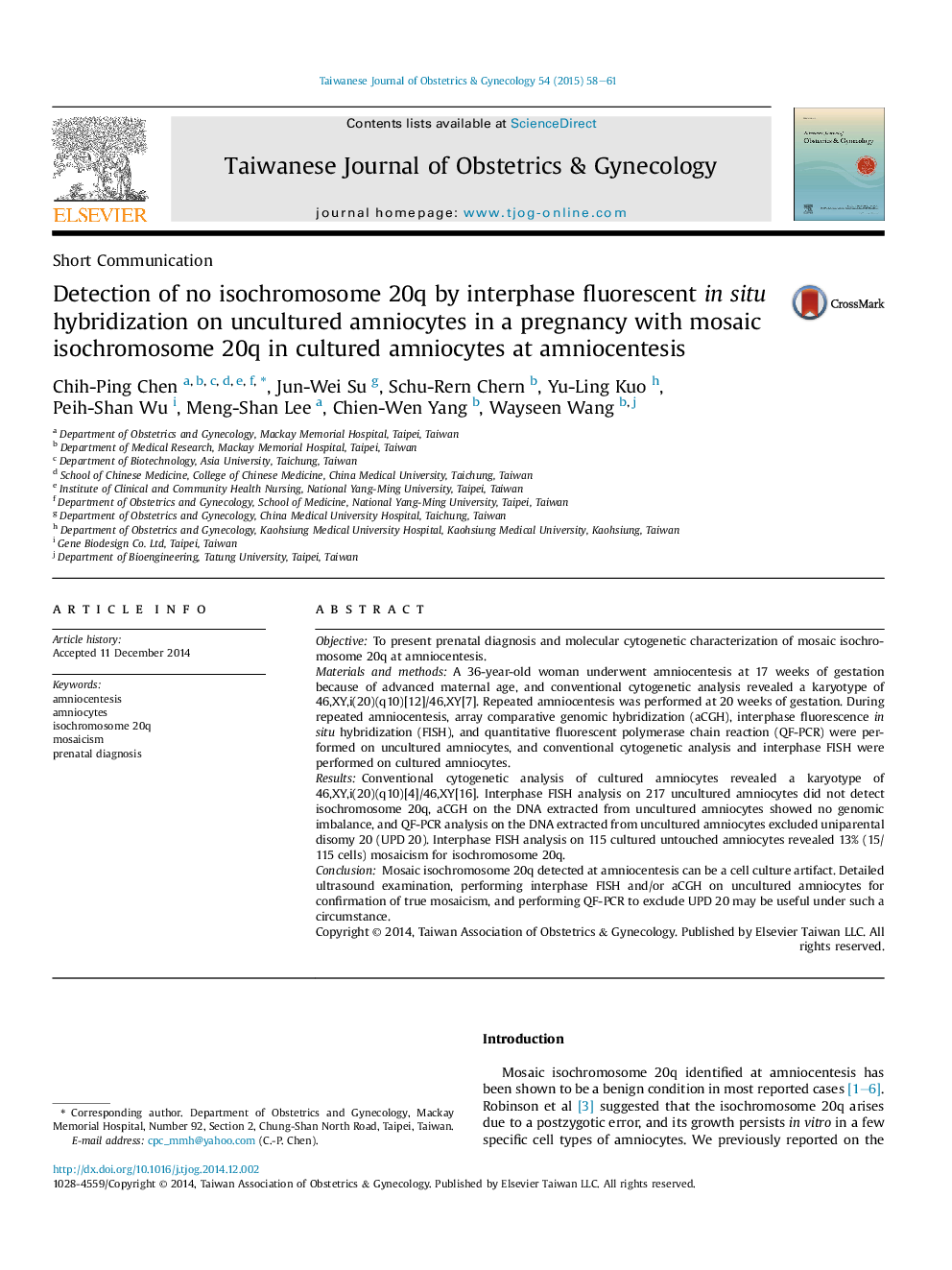| Article ID | Journal | Published Year | Pages | File Type |
|---|---|---|---|---|
| 3974917 | Taiwanese Journal of Obstetrics and Gynecology | 2015 | 4 Pages |
ObjectiveTo present prenatal diagnosis and molecular cytogenetic characterization of mosaic isochromosome 20q at amniocentesis.Materials and methodsA 36-year-old woman underwent amniocentesis at 17 weeks of gestation because of advanced maternal age, and conventional cytogenetic analysis revealed a karyotype of 46,XY,i(20)(q10)[12]/46,XY[7]. Repeated amniocentesis was performed at 20 weeks of gestation. During repeated amniocentesis, array comparative genomic hybridization (aCGH), interphase fluorescence in situ hybridization (FISH), and quantitative fluorescent polymerase chain reaction (QF-PCR) were performed on uncultured amniocytes, and conventional cytogenetic analysis and interphase FISH were performed on cultured amniocytes.ResultsConventional cytogenetic analysis of cultured amniocytes revealed a karyotype of 46,XY,i(20)(q10)[4]/46,XY[16]. Interphase FISH analysis on 217 uncultured amniocytes did not detect isochromosome 20q, aCGH on the DNA extracted from uncultured amniocytes showed no genomic imbalance, and QF-PCR analysis on the DNA extracted from uncultured amniocytes excluded uniparental disomy 20 (UPD 20). Interphase FISH analysis on 115 cultured untouched amniocytes revealed 13% (15/115 cells) mosaicism for isochromosome 20q.ConclusionMosaic isochromosome 20q detected at amniocentesis can be a cell culture artifact. Detailed ultrasound examination, performing interphase FISH and/or aCGH on uncultured amniocytes for confirmation of true mosaicism, and performing QF-PCR to exclude UPD 20 may be useful under such a circumstance.
